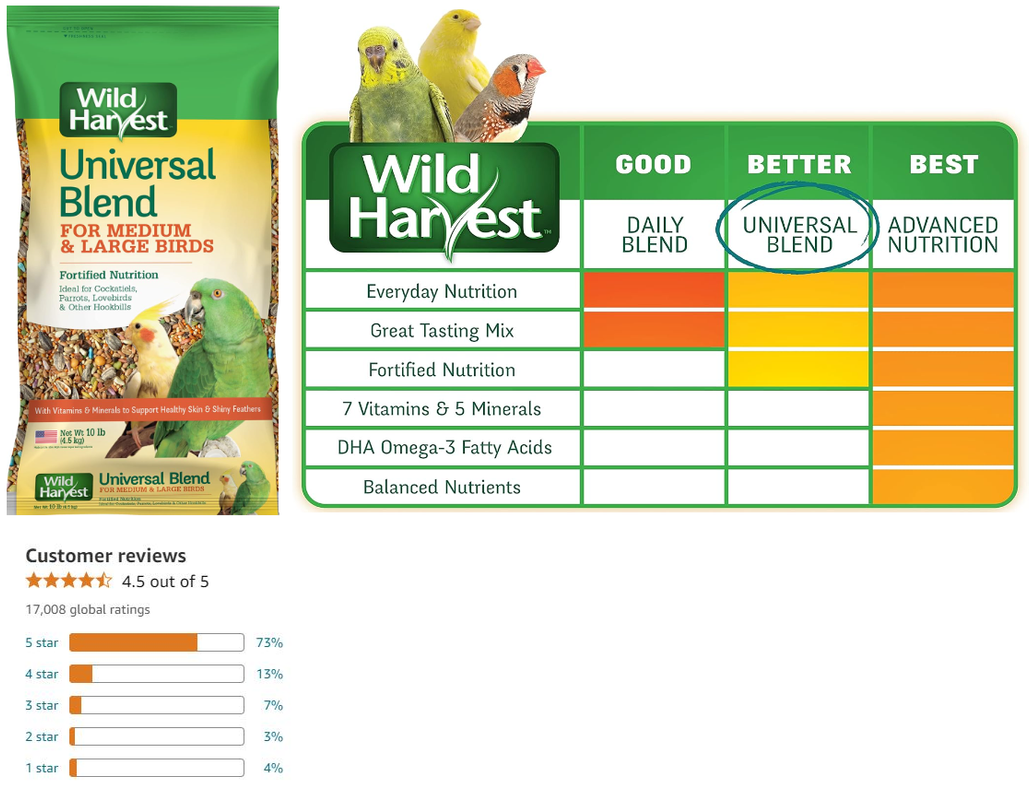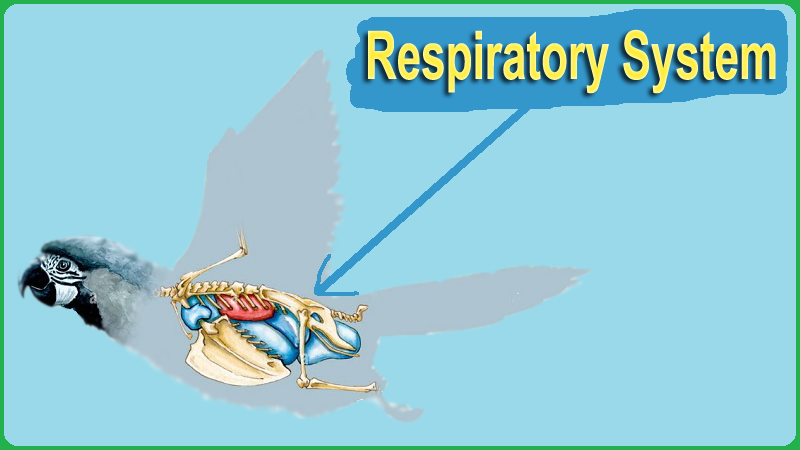As an owner of pet bird, do you know about parrot respiratory system? How did it design that to be met all necessary things of flight and vocalization. Let’s dive in this! Parrot respiratory system build-up with nares, a trachea, a syrinx, rigid lungs, and other nine air sacs.
This not likes as other mammals, because parrots have unidirectional airflow, where air continuously transfer via lungs during both inhalation and exhalation.
When you will proceed, get complete information about this, as well as how air sacs can perform as bellows that facilitate its airflow.
Are you crazy get to know about respiratory system of your parrot?
If yes! Then, this article just for you; here we will explore unique information regarding many aspects of the parrot respiratory system, and giving focus on its anatomy with functions.
Parrot Respiratory System’s Anatomy
Parrot has unique respiratory system that is totally different from other mammals. It contains some specialized structure, which helping out exchange the sufficient oxygen. There are some key parts of parrot respiratory system and their functions include:
Nares and Nasal Cavity
The respiratory process is a start at the nares that are the external nostrils located at the base of the beak.
Now, about air, it gets entry via their nares and passes into the nasal cavity. In this zone, it gets a warmed, moistened, and filtered by tiny hairs.
It is a best to the initial conditioning of the air for giving to protection the delicate tissues.
Trachea
Air tends to move into the trachea through nasal cavity. In this process, it having a long tube that lets to link the nasal passages to their lungs.
Parrots have a relatively long trachea. In some parrot’s species, it can be coiled which helps to enhance sound production in vocalizations.

Cartilaginous rings give to support of its trachea that maintaining its structure and prevent collapse.
Syrinx
This is situated at the base of the trachea that is the vocal organ of birds.
It is equipped with highly specialized structure. So that, parrots can produces a wide range of sounds and complex vocalizations.
With modulating airflow and tension of syrinx membrane, the syrinx gets operate. Hence, your parrots are able to make of mimic with excellent accuracy.
Bronchi
In bronchi process, trachea gets division into two primary bronchi, and each one attaching to a lung.
After going to ahead, again bronchi divide into little tubes, which having names are secondary bronchi and parabronchi.
Apposite of mammalian lungs, parrots lungs don’t get expand and compact. Other than, its airflow gets unidirectional through the lung, and allowing gas exchange with more efficient.
Lungs and Air Sacs
Parrot’s lungs are small in size and more rigid, which embedded in the ribcage. The presence of air sacs makes avian respiratory system unique to other birds that play an important role in respiration.
As a awareness to parrot parents, typically parrots are equipped with 9 air sacs that are distributed throughout their bodies. This includes the interclavicular, cervical, anterior thoracic, posterior thoracic and abdominal air sacs.
The air sacs perform work as bellows, helping out a continuous flow of air through their lungs.
This unidirectional airflow makes ensuring that fresh air passes through the lungs during both inhalation and exhalation, cause of get maintaining a super high level of efficiency.
Function and Mechanics of Breathing
The mechanics of breathing in parrots are connected with the respiratory system’s structure. The process of respiration system has mainly two cycles: Inhalation and Exhalation.
Also Read: Is Your Parrot Coughing? Causes, Symptoms, and Treatment
Inhalation
In Inhalation process, the chest cavity expands, because the rib muscles compact and the sternum gets lower.
Then, this expansion let’s get decreases the pressure in the air sacs, and make entry air into the respiratory system.
Now, fresh air inserts into posterior air sacs while simultaneously passing through the lungs, then occurs the gas exchange.
Exhalation
Expiration is getting started with the relaxation of the rib muscles and the upward movement of the sternum.
This process compresses the air sacs, and making to force air out of the posterior sacs, via the lungs, and into the anterior air sacs.
With helping of anterior sacs, air is pushed out from the body through the trachea.
These processing phase of air movement let’s get a regularly flow of oxygen-rich air through their lungs.
Adaptations for Flight
The parrot respiratory system meets all things that are needed of flight them. In the flight process requires the sufficient oxygen delivery and having a ability to sustain high metabolic rates.
Unidirectional Airflow
The unidirectional airflow through the lungs is a remarkable adaptation, because allows for more efficient oxygen extraction as compared to the bidirectional flow in mammals.
Also Read: How to Care a Sick Parrot? Symptoms, Causes, & Treatment
This system makes a supply of fresh air in lungs, and gets optimizing gas exchange. This process helps to receive super high-energy needs of flight.
Lightweight Air Sacs
The air sacs are in light-weight that facilitate to respiration and bird’s buoyancy.
Air sacs extending parrot’s hollow bones, while simultaneously decrease the overall weight that helping in flight efficiency.
High Oxygen Affinity Hemoglobin
Same like as other birds; parrots have also hemoglobin with a high affinity for oxygen.
This adaptation is more effective for oxygen uptake and getting transport in the bloodstream.
Due to this cycle, parrots receive adequate oxygen via own muscles during sustained flight.
What is Parrot Respiratory Rate?
A healthy parrot has respiratory rate typically ranges from 15 to 40 breaths per minute. But it is totally depended on the species, size, and activity level of the bird.
Also Read: Parrot Sneezing and its Causes, Symptoms, and Treatment
Smaller parrots tend to have higher respiratory rates, while larger parrots have slower rates.
Always observe your parrot’s normal breathing pattern to detect any changes that might indicate health issues.
Respiratory Health and Challenges
As told you above, parrots are evolved with highly efficient respiratory system. Despite of, they are also more sensible to a several respiratory health problems.
Respiratory Infections and Their Symptoms
Parrots can easily get respiratory infections causes of bacteria, viruses, fungi, and parasites.
Pathogens are common include Chlamydia psittaci, which causes psittacosis, but Aspergillus species lead to aspergillosis.
Due to occur these infections, can develop many signs such as sneezing, nasal discharge, and difficulty in breathing.
Environmental Toxins
Some toxin environments, like as smoke, aerosol sprays, and household cleaners can bad impact on parrots.
If, they get to contact those substances, then can irritate the respiratory tract.
So, parrot owners always let’s should keep always own pet to this toxin substances to safeguard them respiratory health.
Air Quality and Ventilation
Poor air quality and inadequate ventilation is also one of them reasons for having respiratory issues in parrots.
For giving well-health of your pet birds, requires to good airflow.
Therefore, keeping clean living conditions are essential for avoiding respiratory distress.
How Can You Keep Parrot’s Respiratory System Healthy?
You can give best health with following some essential tips, including:
Also Read: Can Parrots Get Cold? Parrots Safe Temperature
- Facilitate a clean environment free from dust and mold
- Provide proper ventilation.
- Avoid exposure to cigarette smoke, aerosol sprays, and other airborne irritants.
- Maintain a balanced diet to support their immune system.
- Regularly clean their cage and give fresh water.
FAQs (Frequently Asked Questions)
How Can I Tell if My Parrot Has a Respiratory Problem?
Signs of respiratory problems in parrots include:
- Labored breathing or open-mouth breathing
- Tail bobbing with each breath
- Sneezing or nasal discharge
- Changes in voice or loss of voice
- Reduced activity or lethargy
- Fluffed-up feathers
If you see any of these signs, visit quickly to seek veterinary clinic.
What Are Some Common Respiratory Diseases in Parrots?
- Aspergillosis
- Psittacosis
- Air sacculitis
How Can You Parrot Respiratory Infection Treatment?
To treat a parrot’s respiratory infection, consult an avian veterinarian quickly. This treatment includes antibiotics or antifungal medications, supportive care like oxygen therapy. Ensure having a clean, stress-free environment. Follow the veterinarian’s advice on medication dosage and duration to a full recovery.
Conclusion
Have you read this post completely, be carefully? If answer is ‘YES‘! Then, you have got to know fully parrot respiratory system that is a marvel of evolutionary adaptation.
That is why, these parrots have ability to thrive in diverse environments and exhibit remarkable vocal.
Now at the final, we do appreciate the complexities of the parrot respiratory system.
Also Read: How to Tame a Parrot? Tips & Techniques for Success
Do you have any experience, tips, tricks, or query regarding on this? You can drop a comment!
Have a Nice Day!!





